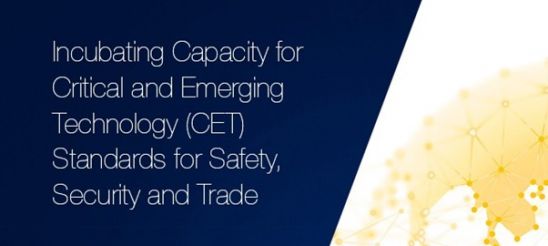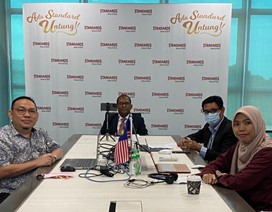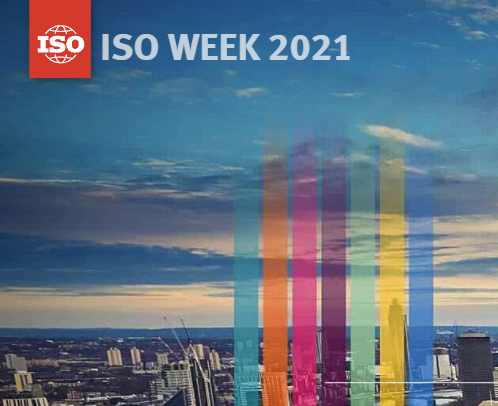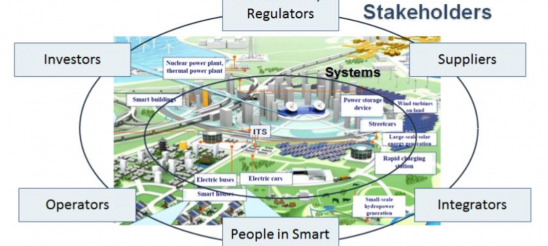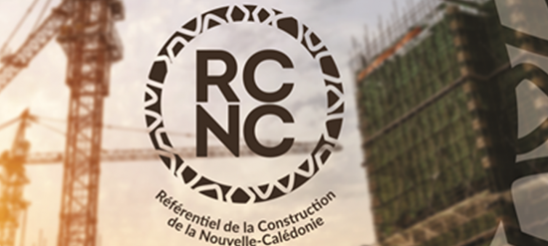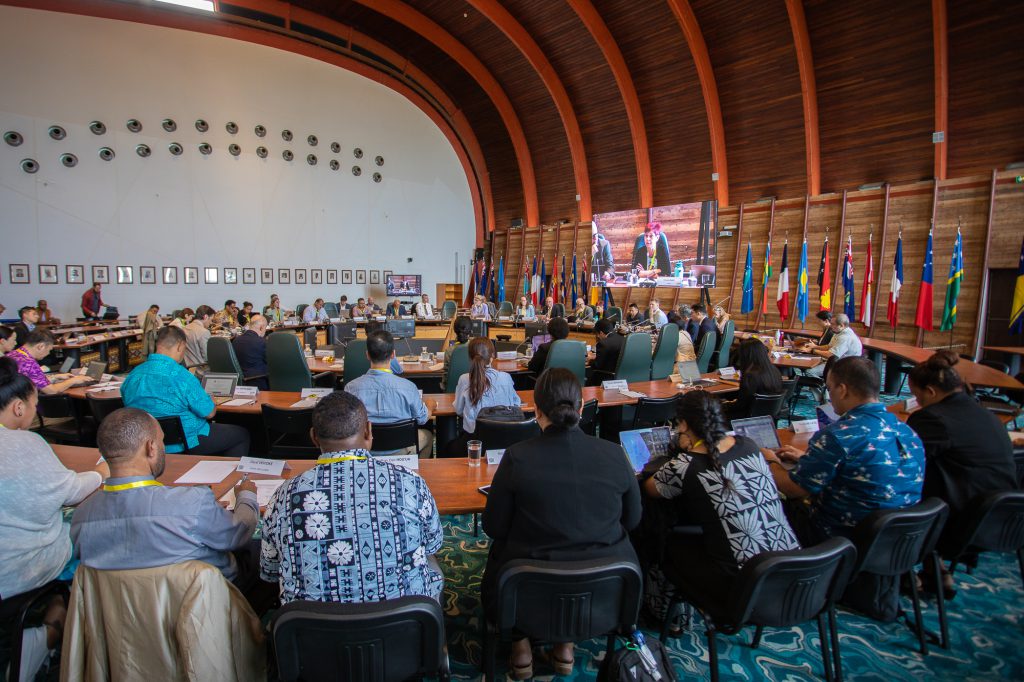
The Annual Meeting of the Pacific Area Standards Congress (PASC) was held earlier this month in Nouméa, New Caledonia. The event brought together standards officials from the 25 PASC member countries and representatives of ISO, IEC and the ITU for discussions on the PASC Strategic Plan, regional and international standards harmonisation and how PASC can support efforts to respond to today’s critical challenges, including climate change and its impacts.
The Annual Meeting was part of Standards Week in Nouméa that was held between 29 May – 2 June 2023. The week also included the annual meeting of the newly formed Pacific Islands Standards Committee (PISC), a Pacific Island country regional standards committee.
Holding these events in the same week allowed for joined-up sessions between the PASC and the PISC that focused on respective priorities and the importance of collaboration between the two organisations. The sessions concluded with a commitment to continue to work together to strengthen the standardisation in the Pacific region.
The PASC Annual Meeting provided a platform for participants to share views and expertise to support the region’s engagement in the international standardisation system and to promote harmonisation of standards across the region to advance economic, societal, and environmental well-being. The discussions focused on PASC’s future strategic directions and Strategic Plan to ensure that future work addresses items of greatest common interest to PASC.
The participants also discussed climate change and how international standardisation can play a role in mitigating its impacts. This included presentations from ISO and IEC on the international work that is being done in response to climate change and discussions on PASC regional engagement in these efforts. It also included workshops on climate change mitigation, adaption, and resilience, with a focus on coordinating regional action.
For more information on the PASC Annual Meeting, contact the PASC Secretariat at [email protected].
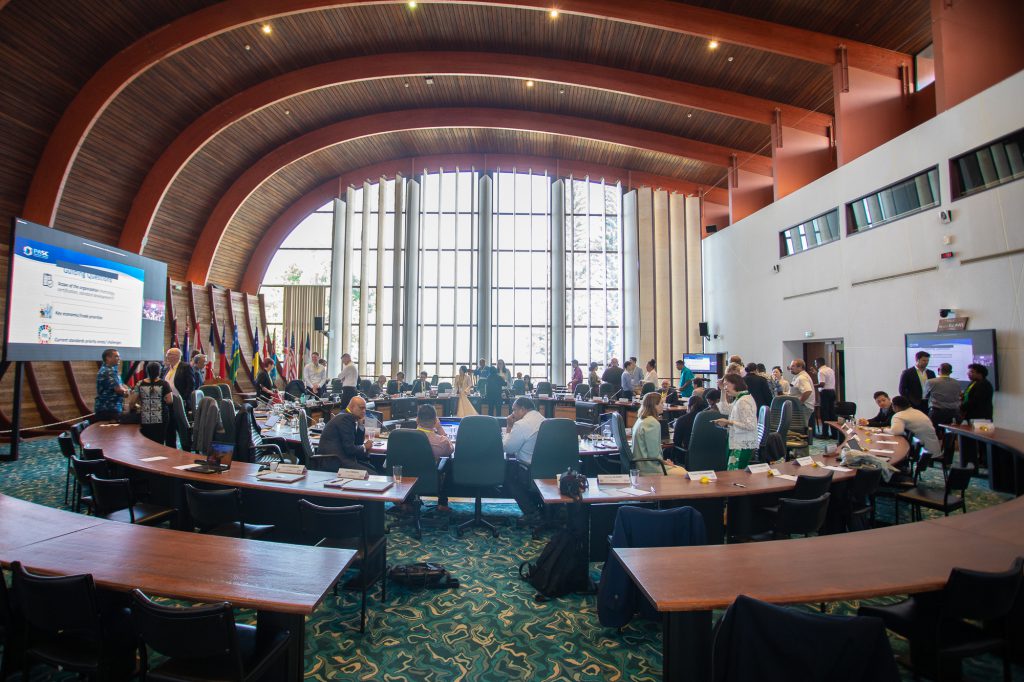
SCC members receive prestigious IEC awards

The Standards Council of Canada (SCC) is proud to congratulate 10 of its members for receiving prestigious IEC awards.
Tony Capel received the highest honour given by the IEC: The Lord Kelvin Award. It recognizes exceptional and long-term individual contributions to standardization to the electrotechnical industry globally. Tony is the 37th laureate to receive the tribute and the first from Canada. At the IEC 85th General Meeting in October 2021, he was honoured for his outstanding participation and dedicated contributions in the areas of wireless industrial communication networks, cybersecurity and smart grid technology/frameworks. Watch the video.
The 1906 Award was created to commemorate the year that IEC was established. It honours the timely and invaluable contributions of technical experts in the standardization field.
The nine Canadians recognized this year are:
Frédérick Dubé, Expert of IEC Technical Committee 37: Surge Arrestors
In recognition of his valuable contributions to the development of TC 37 standards for surge arresters, and for his current leadership as Convenor of TC 37/MT 10. He is responsible for the maintenance of surge arrester application guide IEC 60099-5, and the development of a new Technical Report detailing the rationale behind surge arrester testing requirements, work which he has continued to spearhead through monthly online meetings during a difficult period of COVID-19 quarantine.
Aaron MacNeill, Expert of IEC Technical Committee 114: Marine energy – Wave, tidal and other water current converters
In recognition of his leadership as the Convenor of MT 62600-100, which is developing the second edition of IEC TS 62600-100 on the power performance assessment of electricity producing wave energy converters. He leads a large team of experts on a range of technical updates to a critical standard for the wave energy industry.
Dr. Martin Smith, Expert of IEC Technical Committee 45: Nuclear instrumentation
In recognition of his effective leadership in the development of IEC 63121:2020, Radiation protection instrumentation – Vehicle-mounted mobile systems for the detection of illicit trafficking of radioactive materials, and his valuable contributions to Working Group (WG) 15 of Subcommittee 45B on Radiation protection instrumentation.
Tim Olson, Expert of IEC Technical Committee 78: Live Working
In recognition for his many years of service within TC 78. This includes his leadership as WG 11 Co-convenor, his work leading to the publication of IEC 61472-2:2021, Live working – Minimum approach distances – Part 2, and his contribution to other TC 78 standards.
Marie-Josée Fortier, Expert of IEC Technical Committee 8: System aspects of electrical energy supply
In recognition for her outstanding contribution to the development of power quality standards in TC 8/WG 11 on Power Quality.
Matthew Adams, Expert of IEC Technical Committee 86: Fibre Optics
In recognition for his excellent contribution to IEC measurement standards. He is editor of several documents related to Fibre optic interconnecting devices and passive components, namely IEC 61300-3-3, IEC 61300-3-4, IEC 61300-3-6 and IEC 61300-3-14. Most recently, Matt was responsible for the revision and reformatting of IEC 61300-3-7.
Ark Tsisserev, Expert of IEC Technical Committee 64: Electrical installations and protection against electric shock
In recognition for his long-term contribution and in-depth expertise in the area of electrical installations and protection against electric shock, especially at TC 64 plenary meetings. This includes his work on the IEC 60364 series on low-voltage electrical installations, and the Basic Safety Publication IEC 61140.
Jean Raymond, Expert of IEC Technical Committee 57: Power systems management and associated information exchange
In recognition for his substantial contributions on the impact of the Internet of Things on the Reference Architecture of TC 57.
Mark Fox, Expert of ISO/IEC JTC 1, the Joint Technical Committee on Information Technology
In recognition for his contributions to ISO/IEC 21972, Information technology — Upper level ontology for smart city indicators, and ISO/IEC 5087 series on city data model that is currently under development.
This year’s winners bring the total number of Canadians honoured with the IEC 1906 Award to 83.
Incubating Capacity for Critical and Emerging Technology (CET) Standards for Safety, Security and Trade

Critical and Emerging Technologies (CET) are current and emerging technologies with the capacity to significantly enhance a country’s economic success, security, and social cohesion. This includes Artificial Intelligence, Smart Cities, Advanced Manufacturing, and Standards and Statecraft.
From 25-28 October 2021, Standards Australia, supported by the Australian Government, is seeking to address this gap through a four-day event on the theme of Incubating Capacity for Critical and Emerging Technology Standards.
The goal throughout these four days is to build knowledge and practical skills to accelerate development, adoption and use of recognised international standards for CET within ASEAN.
The first day of the event, held yesterday, focused on Artificial Intelligence. Over 100 participants heard from leading policy and standards experts and shared their insights on the benefits and barriers for international standards on Artificial Intelligence.
Registration remains open for the remaining days of the event, which will focus on Smart Cities, Advanced Manufacturing and Standards and Statecraft.
Participants from across the Pacific Area Standards Congress are welcome to register.
World Standards Day Celebrations in Malaysia
In conjunction with World Standards Day 2021 (WSD 2021), Department of Standards Malaysia (DSM) organised several activities to celebrate and commemorate the occasion. With the theme ‘Shared vision for a better world’, the celebration of WSD 2021 was aimed at raising awareness about the importance of standardisation as well as appreciating the experts worldwide who contribute their time to develop voluntary standards. Amongst the activities were:

Webinar on MS ISO 37001:2016 Anti-Bribery Management Systems (ABMS)

Attendees at the Webinar on Standards and Conformance in Construction Industry – Scaffolding and Falsework
a) A short video on WSD 2021 featuring the wishes from the Director General, top management and staff from multiple divisions.
b) A webinar on MS ISO 37001:2016 Anti-Bribery Management Systems (ABMS) by Dr. KM Loi, the President of ABMS-MY (former Vice-Chair of ISO/PC 278) on 13 October 2021.
c) A webinar on Standards and Conformance in the Construction Industry – Scaffolding and Falsework on 14 October 2021. This webinar was a collaboration between DSM and Construction Industry Development Board (CIDB), Malaysia.
Fiji Celebrates World Standards Day

World Standards Day is celebrated each year on 14 October. The central theme for this year is “Shared Vision for a Better World”.
This year the Ministry of Commerce, Trade, Tourism and Transport in Fiji partnered with the Water Authority of Fiji and the Consumer Council of Fiji to celebrate the important role that #Standards play to achieve Sustainable Development Goals (SDGs).
PASC Members Elected to ISO Council
New ISO governance appointments were recently announced at the 2021 ISO General Assembly hosted virtually by the British Standards Institution (BSI).
Congratulations to the following PASC members for their successful elections to the ISO Council:
- Adrian O’Connell, Standards Australia (SA)
- Pramod Kumar Tiwari, Bureau of Indian Standards (BIS)
- Shaharul Sadri Alwi, Department of Standards Malaysia (DSM)
The ISO Council is one of the core governance bodies of the organisation. These new appointments will give the Asia Pacific region a stronger voice in key discussions and decisions shaping the future of ISO.
New International Standards for Framework for Development and Operation of Smart City Infrastructures Issued
The International Organization for Standardization (ISO) has issued international standards for “Framework for Integration and Operation of Smart Community Infrastructures,” which was proposed by Japan.
Widespread awareness of these standards is expected to globally standardize the processes of developing, operating, and maintaining urban infrastructures and minimize the impact of differences in commercial and development practices in markets companies enter. This should facilitate increasing quality and transparency in smart city development.
Purpose of and background to the proposal
Many companies are facing challenges in proceeding with projects to develop smart cities, smart communities, and their associated infrastructures (smart community infrastructures). Consequently, there have been calls for solutions.

Smart community infrastructures require multiple systems to be consistent with each other and work and function together in a waste-free manner. Examples include the energy, transportation, and ICT systems that go toward making up a city. Against this background, one challenge is that cooperation (interaction) between multiple individual infrastructures is not being planned properly. As a result, some products that are not properly evaluated even if their contribution to energy conservation is high. Another challenge is that the sequence of processes consisting of urban development, urban operation, infrastructural maintenance, etc. varies between countries and regions. This means that addressing the aforementioned challenge is extremely costly, for instance involving seeking help from consultants with detailed knowledge about projects in the region.
In accordance with Japan’s proposal to standardize processes such as development, operation, and maintenance of smart community infrastructures, ISO37155-1 (Framework for integration and operation of smart community infrastructures — Part 1) was approved and published as an international standard in January 2020. ISO37155-2 (Part 2) followed in May 2021.
Outline of the international standards
The two International Standards issued this time have been developed by considering increasing quality and creating a transparent framework. The main purpose of ISO 37155-1 is to ensure proper interaction between multiple infrastructures, while that of ISO37155-2 is to check and verify the validity of the infrastructures. They provide frameworks on what to do in each phase of the infrastructure lifecycle. The standards define the roles and responsibilities of and recommendations for stakeholders with regard to each phase – for example, in the basic plan phase, it is recommended to identify the interaction with other infrastructures and consider measures, taking into account the risks regarding each.
Expected effects
When companies including SMEs enter the markets in smart city and smart community infrastructure development projects, they often do so in order to develop individual infrastructures and components, rather than for whole cities. On the other hand, giant conglomerates or large companies often work on developing entire cities. This means it has tended to be easier for them to gain a business advantage.
To address these circumstances, widespread awareness of these international standards and adoption of them in contracts for infrastructure construction work all around the world will clarify in the form of international standards the ideas regarding allocating the requirements for each urban infrastructure system, and the roles and responsibilities of individual components and infrastructures. Expected benefits from this include furthering international integration of the processes of developing, operating, and maintaining urban infrastructures, and being able to get products’ performance evaluated properly.
As a result, the expectation is that there will be more urban development projects that employ basic policies and frameworks that various companies can easily accommodate. Such policies and frameworks will not cause any disadvantages, and infrastructure and component manufacturers will be encouraged to actively to enter the markets in smart city and smart community infrastructure development projects.
More information on Japan’s international standardisation activities can be found here.
SCC is developing a National Standards Strategy

Standards are vital in sustaining societal well-being and economic growth. The Standards Council of Canada (SCC) is developing a National Standards Strategy (NSS) to ensure Canada’s standards system can help Canadian sectors build back better following the COVID-19 pandemic, and meet new challenges posed by emerging technologies.
The goal of the NSS is to identify the priorities and sectors the Canadian standards system should focus on. A National Standards Advisory Committee, which held its first meeting on June 21, will provide insight at key moments of the Strategy’s development. It is made up of a diverse group of stakeholders from industry, government, standards development organisations, civil society and academia. This committee, supported by SCC staff, will help produce a NSS over the next 10 months. SCC will reach out to Canadians for a public consultation to ensure the Strategy is reflective of the needs of Canadians. The consultation, currently in design, will launch virtually in the fall.
Learn more about the National Standards Strategy.
Resilient Housing in New Caledonia
T he Government of New Caledonia is exploring ways that standards and conformance can help address the challenges of poor building resilience in the face of natural disasters.
he Government of New Caledonia is exploring ways that standards and conformance can help address the challenges of poor building resilience in the face of natural disasters.
They have developed three videos that describe the challenges faced in more detail:
New Caledonia is looking to approach these challenges in a cooperative manner and welcomes potential partners to get in touch with the Department of Procurement, Wealth and Resources to discuss their project in more detail.
Development of Standards for Smart Homes amidst an Era of “Connectivity”
In a post COVID-19 society, the role of our homes in our lives will be new in important ways. For example, homes will become central bases of productive activities for remote workers. This will provide large segments of the population with professional opportunities not previously accessible to them, including the elderly and people with disabilities for whom commuting is not possible.
With an eye on the future of work, technological development of “connectable” devices among home appliances is accelerating. In fact, such devices have already been released into the market, and their proliferation is increasing daily.
Smart homes, in which many such connectable devices are installed, are expected to improve convenience in our everyday lives. We, however, must not forget that such convenient devices bring not only opportunities and benefits, but also risks and costs.
Japan is advancing international standardization for safety of smart homes in anticipation of various kinds of risks and costs to human life.
 How we can grapple with unforeseen troubles?
How we can grapple with unforeseen troubles?
Smart homes enable people to create comfortable living environments through controlling home appliances by taking advantage of IoT (Internet of Things). For example, smart homes allow users to turn on their home air conditioners wherever they are, to check contents of their home refrigerators without opening the door, and to monitor the safety of young children or elderly people staying at home. Smart homes are useful for labor saving of family chores and security management of family members. Furthermore, they have potential to improve energy conservation by connecting systems between electrical appliances. Dissemination of smartphones and smart speakers have accelerated the momentum for technological development, and many companies are engaging in fierce competition to initiate new concept of smart homes.
Technological innovation will improve convenience and comfort in users’ every-day lives. At the same time, it may force users to face unexpected risks because home appliances or systems, which are being simultaneously operated, may cause malfunction or unforeseen trouble due to interference between such appliances.
For example, let us assume that a gas leak detector and an air conditioning system are respectively connected with an automatic window controller system. The air conditioning system keeps sending a signal to close the window in order to maintain a comfortably cool indoor temperature. At the same time, the leak detector sends a signal to open the window once it detects a gas leak. What happens if such two contradictory signals are concurrently sent to the window controller system?
System developers have to assign priorities to various signals which will be received by the window controller system, otherwise it may become confused and malfunction, or it may prioritize the wrong signal, such as keeping the room comfortably cool while it fills with toxic gas.
There are hundreds, perhaps thousands, of such risks awaiting the future of home life. Aiming at reducing and managing such risk cases, Japan proposed an international standard stipulating functional safety of devices and systems used in smart homes. This proposal is now under deliberation at the IEC. This standard will surely contribute to reducing risks not only in residence but also in the business environments of suppliers and service providers who are engaged in smart home systems.
Specifications for handling system errors are not sufficient to ensure users’ safety. Such an approach is championed by Mr. Toshikawa of Misawa Homes Co., Ltd., a high-end residential construction company in Japan. Even if devices and systems themselves are in normal working condition, accidents may happen due to misuse or unintended operation by users or for many other unforeseeable reasons. We need to anticipate the possibility of a wide range of risks, lest the conveniences that our home appliances offer us also threaten our wellbeing.
Following an example of the safety criteria for automobiles
Under the initiative of the Japanese Construction Material & Housing Equipment Industries Federation and the National Institute of Advanced Industrial Science and Technology, a project to develop safety standards is in progress. They endeavor to develop standards which can manage hazardous events caused by other factors than simply system errors. Shortly after the initiation of the project, they were confronted with a challenge: how to ensure users’ safety in areas not covered by functional safety of devices and systems. After long discussions, they found insight from a set of safety criteria under development in the automobile sector.
This set of criteria called “SOTIF (Safety of the Intended Functionality)” is based on an idea which covers misuse or unintended operation by users and mechanical conditions on performance limitations while making predictions about possible safety risks besides system errors. Conventional safety technologies for automobiles are focused on measures to maintain safe driving in the event of mechanical failure. However, recent technological innovations represented by autonomous driving systems and “connected cars” (cars equipped with functions to connect the vehicle to other systems such as cruise-assisted highway systems) have led to a significant change in approach for safety technologies for automobiles. Thanks to this background, SOTIF was inaugurated.
SOTIF consists of specifications designed with different risk factors including weather and other drivers’ conditions in nearby vehicles. “Conventional safety standards for functions of automobiles were developed with a notion that safeness is ensured unless a defect exists in the system. However, this notion is deficient.” This common recognition underlies SOTIF.
Aiming at presenting “SOTIF for houses” as an NP (new work item proposal) at IEC, Japan held frequent discussions on it as a PWI (preliminary work item) with interested countries/regions. Subsequently, the NP was successfully presented at IEC and the voting has been started in June 2021.
Mr. Toshikawa emphasizes that the approach of SOTIF is necessary for the future of smart homes. He shows willingness to advance the consultations with stakeholders in order to establish the international standards for “SOTIF for houses”.
How to predict risk factors
That being said, there are critical differences between the required level of safety criteria for automobiles and those for houses. Safety criteria for automobiles are based on the premise that the users are licensed drivers who have acquired a certain level of driving skill. In contrast, houses are used by a wide variety of people having different personal attributes, and they use home appliances in different conditions. In addition, looking at the safety criteria for houses from the aspect of product safety, it is necessary to predict a risk scenario involving “reasonably foreseeable misuse”. However, predicting “reasonably foreseeable misuse” is by no means easy in this day and age where technological innovation of IoT and the form of relevant services are rapidly progressing.
For that reason, it is critically important for stakeholders to work together to establish safety criteria for houses beyond the bounds of each company and industrial sector. And, beyond the borders of individual countries.
The Ministry of Economy, Trade and Industry of Japan foresees that the mature market of smart homes will be created in the near future through international standardization which contributes to reducing risk factors in the business of service providers in addition to ensuring residents’ safety and security.
Needs for international standardization
IEC 63168 stipulates functional safety standards to address potential risks posed by system errors resulting from connection among electrical and electronic devices, and SOTIF is addressing hazards caused by users’ misuse or usage beyond the intention of system developers. In the context of smart home safety, IEC 63168 and SOTTIF are complementing each other.
One day when connectable devices are widely introduced into our houses and residency in smart homes becomes the norm, our everyday lives will be dramatically improved, and many new opportunities will materialize. At the same time, lest we find ourselves with homes that are comfortably cool but also filled with toxic gas, we must never forget that the more sophisticated and complicated systems become, the more likely unknown hazards exist behind them.
International standards for smart homes are indispensable for providing safe and secure residences throughout the world.
Learn more about this work and Japan’s international standardisation activities here.


